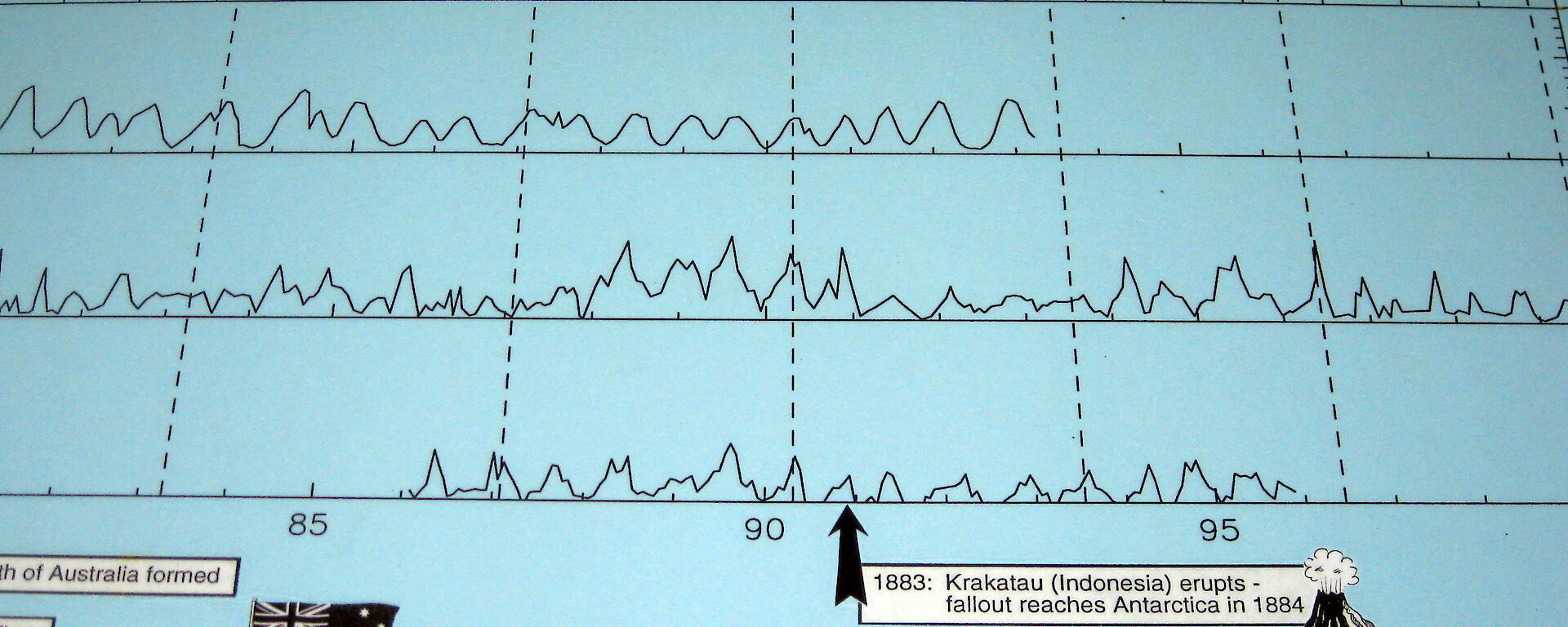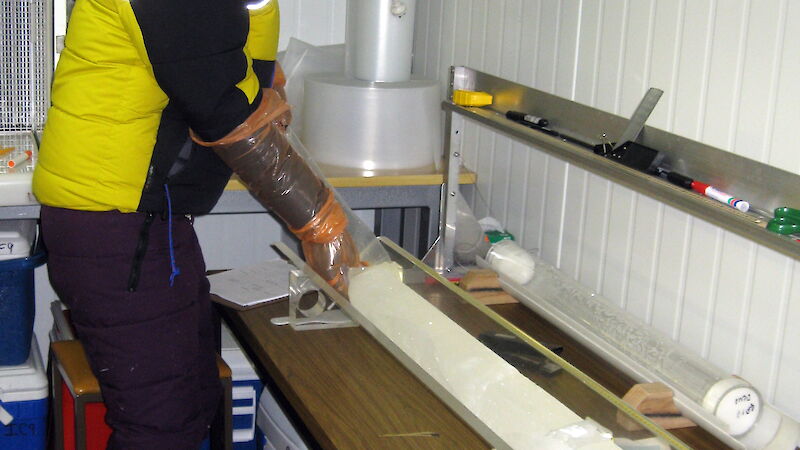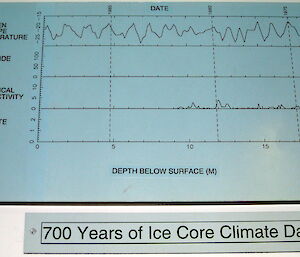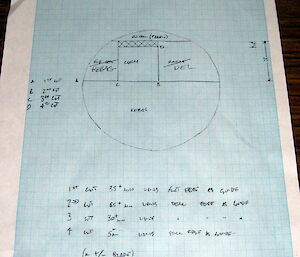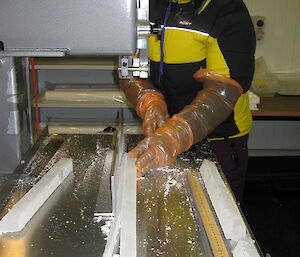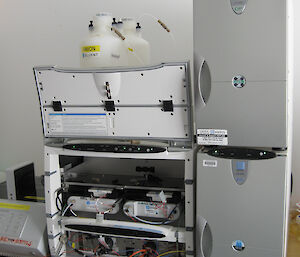I’m looking at a length of 3000 year old ice core, but its age doesn’t really register until technical assistant, Meredith Nation, of the Antarctic Climate and Ecosystems Cooperative Research Centre, says ‘this ice is older than the pyramids of Egypt'. This one metre section of a much longer core, extracted from Dome Summit South (DSS), on Law Dome, contains about seven years of climate history from well before Christ was born.
It seems fitting then that unlocking this climate archive requires significant time and effort. It begins with the planning and logistics to extract the core from the ice, which is often done in sections over years or decades. The core in question today is part of a 1200m core with a climate history stretching back 90 000 years through the last Ice Age. It took six Antarctic summers to recover.
Law Dome is an ideal site to study climate history as it is close to the coast and exposed to aerosols blown in from the sea. Cores are usually extracted in two metre lengths and then cut in half for ease of storage and handling. They are shipped or flown back to a minus 20°C freezer in the Australian Antarctic Division’s glaciology department and each length of core is then cut into smaller pieces and analysed for its chemical constituents.
The external surfaces of the cores are contaminated by ‘dirty’ ice which has been exposed to the drill equipment, the modern day atmosphere and gloved human hands. But these sections can be used to measure hydrogen peroxide and isotopes (different chemical forms) of oxygen and hydrogen. The isotopes provide information about temperature at the time the snow was deposited, while hydrogen peroxide provides a measure of sunlight intensity.
'The level of hydrogen peroxide is greater in summer than in winter, so it helps us identify the annual layers in the ice,' says Antarctic Division Ice Core Chemist, Dr Mark Curran.
Today, Meredith is cutting a 3 cm-wide 'chemistry stick' from the heart of the 3000 year old core. Before cutting into a core she draws a detailed plan of the core and the sections she will cut. It's important to ensure the top and bottom of the core are not mixed up…the wrong end of the 'stick' could mean analysis and interpretation of the wrong climate era. Meredith also looks at the core's physical appearance – a layer of dust could harbour ash from a volcano, while clear, thin bands indicate when a storm glazed the surface of the continent.
The ‘clean’ inner surface of the chemistry stick will be melted and analysed using an ion chromatograph. This measures the presence and quantities of ions such as methyl sulphonic acid (MSA), chloride, sulphate, nitrate, sodium, calcium, potassium and magnesium.
According to Dr Curran, MSA is produced from the oxidation in the atmosphere of dimethylsulphide, which is itself produced by certain species of phytoplankton in the Southern Ocean. The amount of MSA in an ice core is related to the maximum extent of sea ice in the region. This is because in years where there is more sea ice, there is more phytoplankton activity following sea ice decay and therefore more MSA production.
The sea salt, chloride, is produced over the ocean when it’s windy. More wind means more breaking waves and more seawater droplets entering the atmosphere.
'This allows us to identify storms in the climate record,' Dr Curran says. ‘Because there tend to be more storms in winter than in summer, we can use this annual cycle for dating as well.'
Sulphates give an indication of volcanic activity, while nitrates are thought to be produced by lightning in the tropics.
'So we can get a lot of information out of one small sample,' Dr Curran says.
After 3000 years locked in the Antarctic ice cap, the climate secrets of our ancestors’ world are being exposed. What will future ice core scientists learn from snow that falls today?

